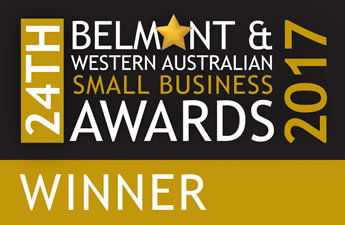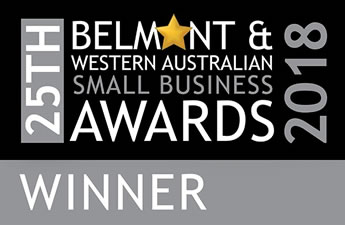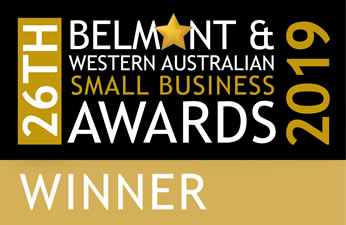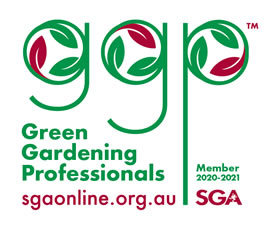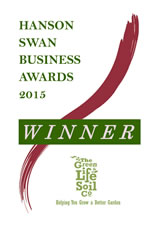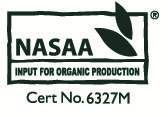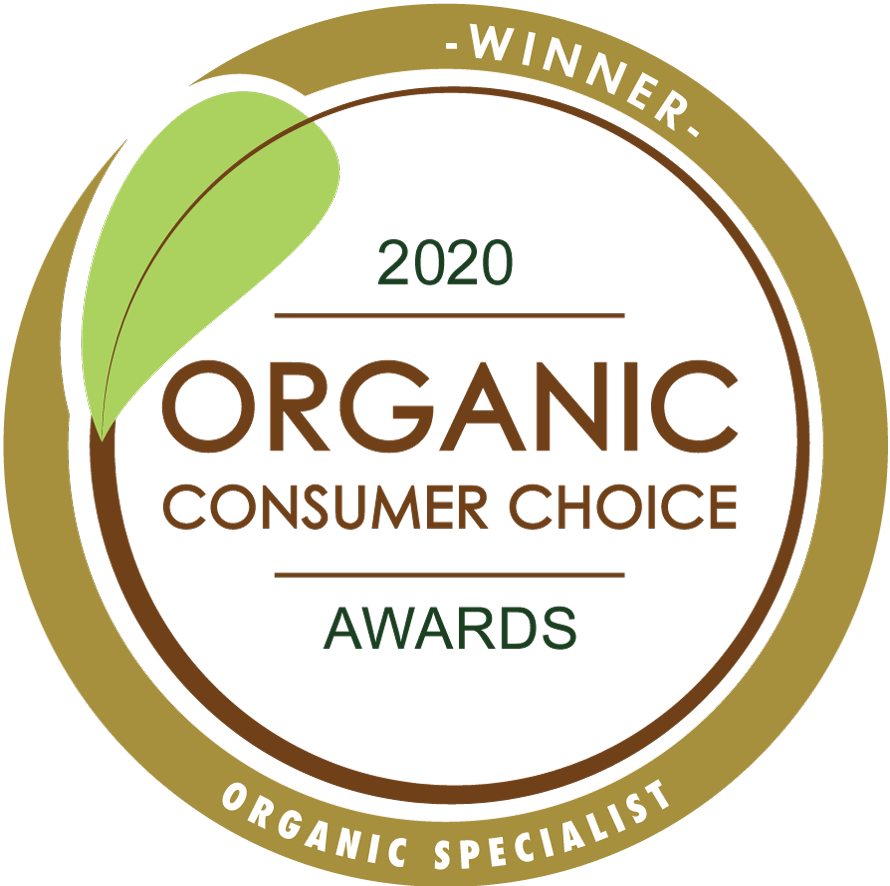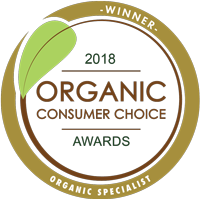| item(s), Total: $0.00 View Cart |
| Shopping cart is empty. |
Did you get to attend any of our 'Everything Begins with the Soil' workshops? We had good feedback about the sessions, and we know that many of you would be interested in a range of other gardening related topics; so watch this space for future events. If you're looking for opportunities to learn more about gardening here in Perth, look no further than the Kalamunda Garden Festival - held the first Sunday of every traditional season - so the next one's on Sunday, 7th September. It also happens to be Father's day - so bring dad along (or if he's not into gardening, send him off to do whatever HIS thing is - where you'll know he'll be happy for a few hours!!!) and check out the Festival. Tickets must be bought on line if you're wanting access in 'peak hours' 10am - 12pm; after then, tickets can be bought at the gate. There's a whole range of talks and activities on the day, plus music and food trucks and lots of plant and gardening related stalls. We host a speakers' marquee at the Festival - so Paul & I will be there; come along and say hi! New CERTIFIED ORGANIC product. It feels like it really IS the time to emerge from the Winter blues, so take advantage of the longer days, the pleasant sunshine while it's not too hot, and get busy in your garden... We hope to see you soon!
In this newsletter:
11 top to do jobs to do in the September Garden
What to Plant NOW
Here's some ideas as to what you can plant now (remember to see our FREE downloadable guides on our website - click here!) Asparagus, Artichokes Jerusalem and Globe, Asian greens, Beans, Beetroot, Broccoli*, Capsicum, Chilli, Carrots, Celery, Chives, Corn, Cucumber, Dill, Eggplant, Fennel, Kale*, Lettuce, Onion, Parsnip, Peas, Potato, Pumpkin, Radish, Rhubarb, Rocket, Silverbeet, Snow pea, Spring onion, Strawberries, Sweet corn, Tomato, Turnip, Zucchini. (Check out our extensive info on growing various vegies and herbs in Perth here.) * Brassicas will grow in Perth into Spring/Summer, provided conditions are suitable. Be aware increased pest pressure over the warmer months is likely; are you prepared to net your vegies or deal with cabbage butterflies, for example? If you can't cope with the pests, it's better to plant in season vegies that will withstand the conditions. Start spring seeds off in a good quality seed raising mix (like our Certified Organic one!). It's fine to re-use recycled pots and punnets. Ideally, soak them in warm water with a dash of household bleach, give them a good scrub to remove any dirt, and allow them to dry in the sun. Keep your sown seeds in a warm spot, making sure the soil's surface doesn't dry out completely. Top tip - use a fine layer of vermiculite sprinkled over your seeds to help keep them moist. We've got a free fact sheet on growing from seed - so check it out for more tips & tricks for success. Like it? Please share it! We've still got just a couple of Ever-Red Rhubarb crowns available and a good quantity of Mary Washington Asparagus crowns - they're starting to sprout., and itching to get into your garden - so come on in and pick some up soon. Ever Red is a true red stemmed variety of rhubarb - which people prefer because it looks so pretty! It looks (and tastes) amazing. Not sure where to put one? Rhubarb do well in a large pot or planter bag - and the advantage of this is you can move them with the seasons. Rhubarb don't like our harsh summers so do need shade; while in our winter they do just fine in full sun.
Here's our growing tips on Asparagus & Rhubarb (click on the link to take you to the fact sheet). Speaking of ASPARAGUS - here's 10 fun facts about this amazing vegie!! 1. Under ideal conditions, asparagus spears can shoot up as much as 7 inches/18cms in a single day. 2. Eating asparagus often results in a distinctive odor in urine due to sulfur compounds, but not everyone can smell it because of a genetic quirk called “specific anosmia.” (I think they're the lucky ones!!) 3. Asparagus plants require about three years from seed to harvest, but once established, they can keep producing spears annually for 10 to 20 years or more. 4. Asparagus comes in different colors: green is most common, white is grown underground to avoid chlorophyll and has a milder taste, and purple (developed in Italy) has a sweet, nutty flavor. 5. White asparagus is especially popular in Germany, where it is called “white gold.” Festivals celebrate the asparagus season (Spargelzeit) each spring. 6. Ancient Egyptians, Greeks, and Romans prized asparagus as a delicacy and an aphrodisiac. The phrase “as quick as asparagus” originated to describe its fleeting season. The word “asparagus” comes from the Greek “asparagos” (meaning sprout). In old English, it was sometimes called “sparrowgrass.”
8. Asparagus has shown up in culture, literature, art, and music. There are National Asparagus Days celebrated - May 24th in the US, and a whole festival in Worcestershire in the UK kicks off on April 23rd (St Georges Day) and runs for about 6 weeks. (photo credit & festival details: www.britishasparagusfestival.co.uk) 9. Jemima Packington of the UK is an "Asparamancer" - using Asparagus spears to predict the future, reading how the spears fall onto a flat surface when tossed into the air. She claims a 75-95% success rate with her predictions. 10. Asparagus is highly nutritious. It is low in calories, high in fiber, and packed with vitamins A, C, E, K, folate, potassium, and chromium. It is also a natural diuretic and full of antioxidants. Frass, Flies & Fungi - what's the connection?
If you've used Green Life Soils recently and noticed large maggots or grubs in the mix - please don't panic! Soldier Flies are a harmless insect, and their larvae in the soil don't harm your plants at all. In fact, they're a good sign! (see below pic.) Soldier Fly Larvae are super efficient at breaking down organic waste material, and frass is the manure produced the larvae. These voracious little eaters are raised on food and farm waste by local innovators Arvela (formerly Future Green Solutions), who are developing large-scale systems that help divert organic material away from landfill. Not only do the larvae themselves become a high-protein feed source, but the frass they leave behind is a valuable resource for gardeners and farmers. If you find them in your soil, it's a great sign of life. Also, BSF larvae will out compete other fly maggots in any garden waste/compost/manure you have - so they're actually useful in reducing the amount of pest flies that may accumulate around your compost piles. We’ve been working with Future Green Solutions for several years, trialing their frass in our soils. The results have been so encouraging that Sassy Frass is now Certified Organic and included in many of our mixes – and also available as a stand-alone product for you to try at home. Most manures provide nutrients. Frass does that too – but its real magic is how it supports fungi in the soil. Beneficial fungi are one of the hardest soil microbes to establish, especially in WA’s sandy soils which dry out quickly and lack organic matter. Yet fungi are absolutely vital for healthy gardens. They form underground networks (mycorrhiza) that allow plants to access nutrients and moisture well beyond their root zone. These fungal networks connect plants together, helping them “share” resources and even chemical signals – almost like an underground internet. They also improve soil structure, helping it hold more water and resist erosion. The challenge is that fungi are delicate. Digging, chemical fertilisers, and poor soil conditions can wipe them out easily. That’s where frass comes in.
There’s another layer too: as BSF larvae grow, they shed their skins, which contain a substance called chitin (pronounced “kite-in”). Fungi use chitin as a building block in their own cell walls, so frass provides them with a direct resource. In short, frass not only feeds your plants – it feeds the fungi that feed your plants. Interestingly, plants also have receptors that detect chitin. When they sense it in the soil, they often respond as if an insect or fungus is attacking – by strengthening their cell walls and activating natural defences. This means plants grown in soil with frass can become more robust and less prone to pests and disease. By choosing Sassy Frass, you’re supporting a system that recycles local organic waste, turns it into valuable resources, and closes the loop between waste and food production. It’s a win for your garden, and a win for the planet. If you're interested in trialing Sassy Frass in your own garden, we've made it our newsletter special offer this month - see below for more details. A little goes a long way – simply mix into soil or sprinkle lightly around plants and water in.
Monthly Newsletter SpecialThis month, we've got our Sassy Frass 1kg bags available on special - $11.00. This is a bargain (less than half price what you'd find frass selling for online!) You can add a sprinkling of Sassy Frass around your new seedlings, or use prior to planting by lightly mixing in the soil. Use around fruit trees, roses, natives, pot plants - anywhere! A light sprinkling will not burn or harm your plants, and will help build healthier soil life (read the article above about the amazing benefits of Black Soldier Fly larvae & frass!). Come on in - valid while stocks last until close of business Tuesday, 30th September 2025. Nasturtium - the wonder-weed?!
Trapaelum majus - the common Nasturtium - originated in the highlands of Peru but is happily adapted to conditions throughout the world. In our climate, it is a winter/spring annual. Nasturtium was taken to Europe from the "new world" by the Spanish in the 16th Century, along with potatoes and the tomato; and was viewed as an edible plant; in Europe it was commonly known as "Indian Cress". Its ornamental popularity exploded after it was used in gardens at the Palace of Versailles - making the humble Nasturtium incredibly fashionable! In Victorian flower language, Nasturtiums symbolise patriotism, loyalty and strength - victory in conquest & perseverance. You probably know that both the leaves and flowers of Nasturtium are edible - but I've looked into a few more facts that I hope you enjoy learning about its uses and benefits. Nasturtium has been used medicinally for centuries internally and for cuts and scrapes - it is high in Vitamin C, minerals, antioxidants and natural anti-bacterial and anti-inflammatory compounds. It is said to help with respiratory issues, acne and digestive issues. One anti-inflammatory compound is Lutein (and nasturtium has one of the highest amounts of this of any plant) which can help with eye and skin health. Making a tea by steeping crushed leaves and flowers is a great way to create a natural face or scalp wash, as well as drinking it for sore throats and colds. (As always, use herbal/plant remedies with caution and discuss with a medical professional if you're taking medication, pregnant or concerned.) As a companion plant, Nasturtium has been shown to make a great decoy crop - particularly for caterpillars that love brassicas. Plant near but not right next to your broccoli, kale or cauliflower, and the adult moths will lay eggs on the Nasturtium plants instead; and they'll happily chomp away and (hopefully) leave your crops alone. Nasturtium also attract whitefly and aphids - so they're a good crop to grow around your roses, citrus or other plants plagued by these pests. Keep an eye on the pest numbers on your Nasturtium plants and treat or remove if the numbers build up to a level that will threaten your beloved plants. Nasturtium flowers will attract beneficial insects and pollinators to your garden; which is another great reason to allow them to stay and thrive. Allowing them to sprawl under and around fruit trees will have multiple benefits - providing both the trees and Nasturtiums have adequate moisture and nutrients to thrive. Nasturtium will outcompete many other, smaller weeds, and act as a living mulch, encouraging beneficial microbial activity in the soil.
How to make the leaves and flowers part of your diet is limited only by your imagination! They can be eaten fresh in salads (tip: smaller leaves, from well-watered plants grown in the shade will have a milder flavour), lightly steamed as/with spinach, and used chopped in any recipe base (stock/soup/stews) to add flavour. As a garnish or on a serving platter as a base under your other treats, as a pesto (we made a parsley and nasturtium pesto the other night, and it was yum!) or use the leaves as a wrap (cream cheese and herb filling is tasty!) - similar to grape leaves for dolmades or other bite sized morsels. Nasturtium leaves and seeds were dried and ground as a substitute for black pepper in WW2 when the real stuff was hard to obtain. After flowering, the plants produce large seeds - which make a great substitute for capers (real Capers are from a different plant). To make pickled Nasturtium 'capers', we have a recipe here for you. If you would prefer a milder flavour of capers, soak first, ensuring seeds are submerged in brine (2 cups water/1/4 cup salt) for 12 hours, and repeat this step 2-3 times before proceeding with the recipe.
Method Photo Competition Winner
Tomatoes are the most popular vegie (ok, so yes - they're a fruit technically!) for people to grow at home; but they're also the cause of much heartbreak for gardeners - between shield bugs, caterpillars, birds and rats - not to mention wilt, blackspot, sunburn and other problems - they can be tricky! David sent in these photos of his tomatoes in Swan View. Like some other customers, he believes growing tomatoes in winter is "easier" - given less pest pressure over the cooler months. The key is microclimate. If it's a warm spot with some thermal mass reflecting warmth (like against a wall or paving as you can see in the photo), this certainly helps. He's been enjoying home grown tomatoes all through this winter - lucky man!
Thanks David for sending in the photos. You've got a $50 store credit to spend with us. Folks - it's that easy to enter! Send us in a few photos of your garden with a bit of an explanation of what's going on (what your project is, what you're growing). Have you had anything surprise you growing out of season at your place? Retailer Update
Anketell Stockfeeds/Nibali Anketell 9419 5711 Ardess Nursery (Albany) 9842 9952 THANK YOU for being part of our Green Life family! We hope to see you in store soon. Check out our newsletter next month & stay up to date with our Facebook and Instagram pages for announcements, stock arrivals and general good gardening vibes! |



 Hello & welcome to September! It's officially Spring; and we're moving through Djilba in the Noongyar calendar; the first spring. We've certainly had some RAIN - with it being (as I write) the wettest winter since 1996. Long term, it's great for our environment; the creeks and waterways are certainly flowing well in the catchment areas. How is your garden coping? We'll be having warmer, sunnier days soon - so enjoy the rain while it lasts!
Hello & welcome to September! It's officially Spring; and we're moving through Djilba in the Noongyar calendar; the first spring. We've certainly had some RAIN - with it being (as I write) the wettest winter since 1996. Long term, it's great for our environment; the creeks and waterways are certainly flowing well in the catchment areas. How is your garden coping? We'll be having warmer, sunnier days soon - so enjoy the rain while it lasts!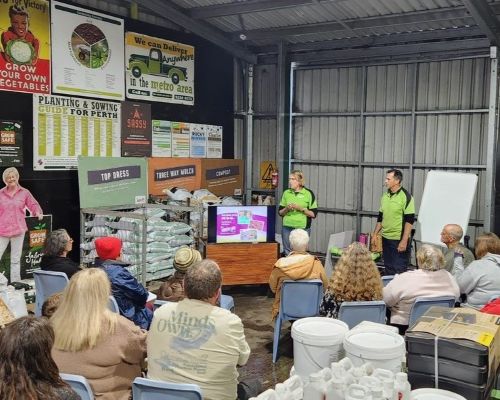 Linda & the Team @ Green Life Soil Co
Linda & the Team @ Green Life Soil Co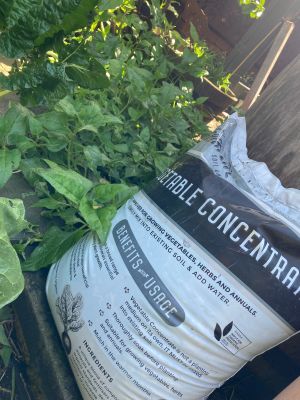 Feed your soil! (this in turn feeds your plants!) NOW is the time to fertilise your fruit trees; they'll be waking up from winter dormancy (deciduous trees) and putting on their spring flush (deciduous and evergreen trees). Compost, aged manure, a balanced slow release, rock dust - or our
Feed your soil! (this in turn feeds your plants!) NOW is the time to fertilise your fruit trees; they'll be waking up from winter dormancy (deciduous trees) and putting on their spring flush (deciduous and evergreen trees). Compost, aged manure, a balanced slow release, rock dust - or our  Repot your indoor plants. If you haven't done so already, repot and tidy up your indoor & patio plants. They'll respond to the TLC and the warmer weather with healthy new growth. Try our
Repot your indoor plants. If you haven't done so already, repot and tidy up your indoor & patio plants. They'll respond to the TLC and the warmer weather with healthy new growth. Try our 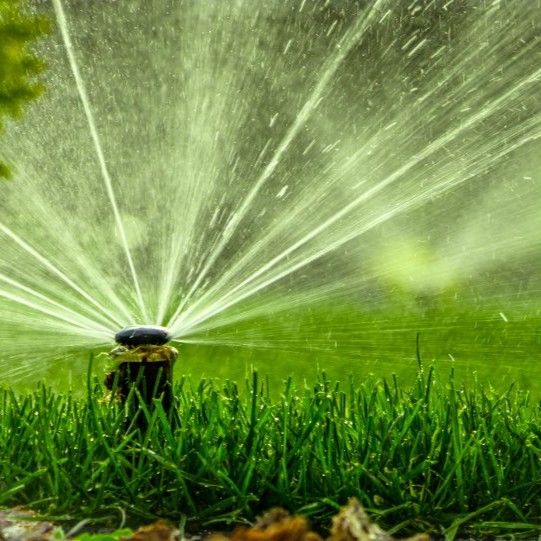 Love your lawn! Here's tips from lawn expert Nick Bell on what you should be doing now to get your lawn into tip-top shape prior to summer: "Progressively lower height of grass to 8-12mm depending on variety by close mowing. First cut remove 1/3 of the grass, then remove another 1/3 and finally remove a further 1/3 double cutting up and down the same swathe. Then comb through the lawn without touching soil with a Mowmaster grooming reel, and remove clippings and all debris. Evenly spread 10Kg Neutrog Blade Runner organic lawn fertiliser per 100m2 (* = 10/100 x .02 = 2g Nm2). Restore smooth firm even surface by top dressing a 5mm depth of Green Life Soil's
Love your lawn! Here's tips from lawn expert Nick Bell on what you should be doing now to get your lawn into tip-top shape prior to summer: "Progressively lower height of grass to 8-12mm depending on variety by close mowing. First cut remove 1/3 of the grass, then remove another 1/3 and finally remove a further 1/3 double cutting up and down the same swathe. Then comb through the lawn without touching soil with a Mowmaster grooming reel, and remove clippings and all debris. Evenly spread 10Kg Neutrog Blade Runner organic lawn fertiliser per 100m2 (* = 10/100 x .02 = 2g Nm2). Restore smooth firm even surface by top dressing a 5mm depth of Green Life Soil's 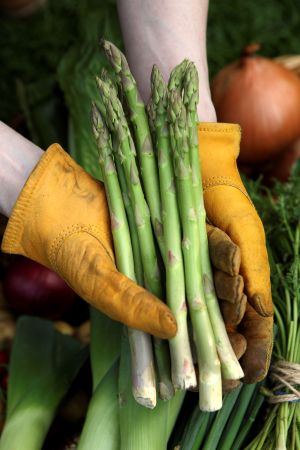 Asparagus is a hardy perennial plant that can handle being in a pot or planter bag for a few years, but ultimately this long lived plant (20+ years) should be given a permanent spot in your garden as it heads to maturity. The crowns we have in stock are two years old, so you can begin harvesting the odd spear now; but if you plant them out and feed them up, within a couple of years you'll be harvesting HEAPS of healthy and homegrown asparagus.
Asparagus is a hardy perennial plant that can handle being in a pot or planter bag for a few years, but ultimately this long lived plant (20+ years) should be given a permanent spot in your garden as it heads to maturity. The crowns we have in stock are two years old, so you can begin harvesting the odd spear now; but if you plant them out and feed them up, within a couple of years you'll be harvesting HEAPS of healthy and homegrown asparagus.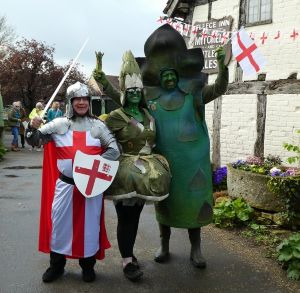 7. Asparagus is a great companion plant in the garden, and may help protect tomatoes from root-damaging nematodes. Rhubarb, strawberries and basil make other good companions.
7. Asparagus is a great companion plant in the garden, and may help protect tomatoes from root-damaging nematodes. Rhubarb, strawberries and basil make other good companions.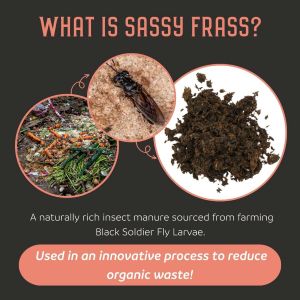 In case you aren't aware, one of our special ingredients we use in some of our mixes is Frass - Black Soldier Fly (BSF) frass, to be precise.
In case you aren't aware, one of our special ingredients we use in some of our mixes is Frass - Black Soldier Fly (BSF) frass, to be precise. 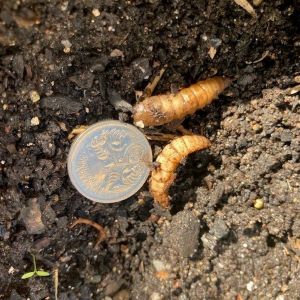 When we’ve looked at frass-amended soils under the microscope, the difference is striking – fungal populations are higher, faster. Even small amounts of frass seem to tip the balance in favour of fungal life. For gardeners, this means stronger soil biology that keeps working long after you’ve added it.
When we’ve looked at frass-amended soils under the microscope, the difference is striking – fungal populations are higher, faster. Even small amounts of frass seem to tip the balance in favour of fungal life. For gardeners, this means stronger soil biology that keeps working long after you’ve added it.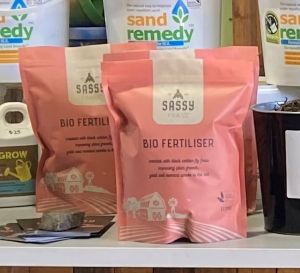 More fungi. Healthier soil. Stronger plants. That’s the Sassy Frass difference.
More fungi. Healthier soil. Stronger plants. That’s the Sassy Frass difference.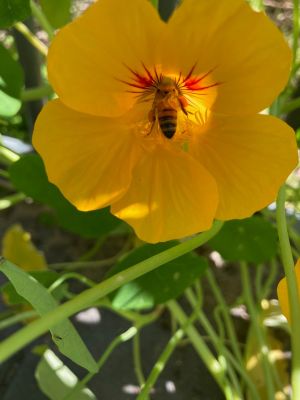 Nasturtiums grow very easily from seed and will self-sow in your garden each year if you let them. Flowers come in a variety of colours - yellow, orange, cream, red and apricot being the most common. Some have unusual blotches or stripes in the petals. I have planted several different colours, but find one usually ends up taking over; being more vigorous or better suited to the site - and I don't really mind! While they're not a true climbing plant, they will certainly scramble up and over things if they can, chasing the sun. They can also be used as a trailing plant in hanging baskets, or on balconies.
Nasturtiums grow very easily from seed and will self-sow in your garden each year if you let them. Flowers come in a variety of colours - yellow, orange, cream, red and apricot being the most common. Some have unusual blotches or stripes in the petals. I have planted several different colours, but find one usually ends up taking over; being more vigorous or better suited to the site - and I don't really mind! While they're not a true climbing plant, they will certainly scramble up and over things if they can, chasing the sun. They can also be used as a trailing plant in hanging baskets, or on balconies.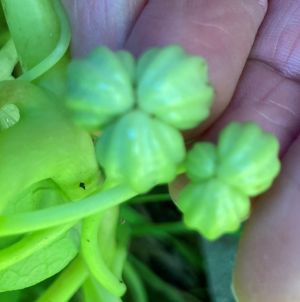 You'll need:
You'll need: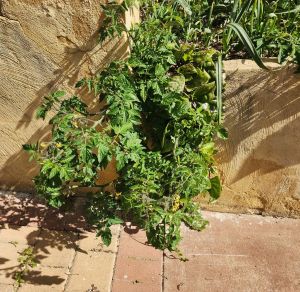 This month's winner of our photo comp is David B, who sent in his pictures a few weeks ago.
This month's winner of our photo comp is David B, who sent in his pictures a few weeks ago. Please support your local independent retailer who supports us! The specialist retailers listed here will be happy to give you gardening advice and help you with our products - please call to check what lines they carry as they can't stock all of our products (but may be willing to get stock in for a custom order - if you ask nicely!). Some of these fabulous retailers also offer a home delivery service (marked with *) - so why not go local? (Please contact the store directly for details.)
Please support your local independent retailer who supports us! The specialist retailers listed here will be happy to give you gardening advice and help you with our products - please call to check what lines they carry as they can't stock all of our products (but may be willing to get stock in for a custom order - if you ask nicely!). Some of these fabulous retailers also offer a home delivery service (marked with *) - so why not go local? (Please contact the store directly for details.)



